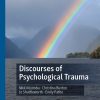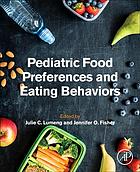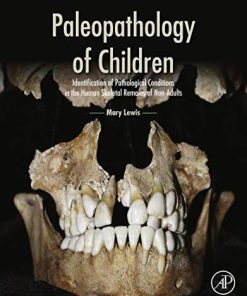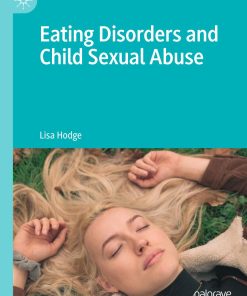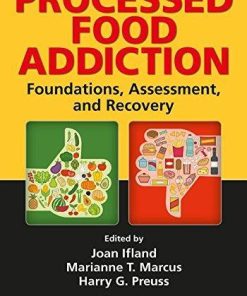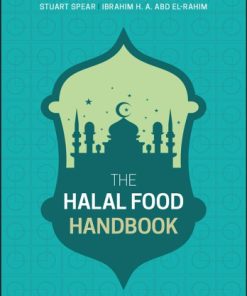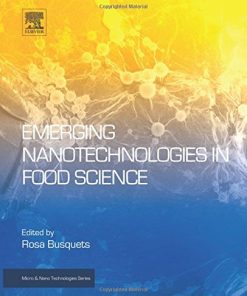Compulsive eating behavior and food addiction Emerging pathological constructs 1st Edition by Pietro Cottone, George Koob, Catherine Moore, Valentina Sabino 0128163832 9780128163832
$50.00 Original price was: $50.00.$25.00Current price is: $25.00.
Compulsive eating behavior & food addiction: Emerging pathological constructs 1st Edition by Pietro Cottone, George F.Koob, Catherine F. Moore, Valentina Sabino – Ebook PDF Instant Download/DeliveryISBN: 0128163832, 9780128163832
Full download Compulsive eating behavior & food addiction: Emerging pathological constructs 1st Edition after payment.
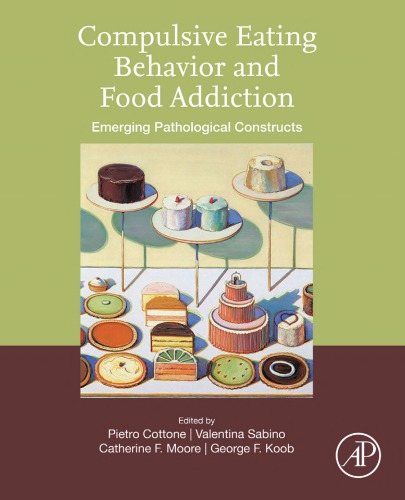
Product details:
ISBN-10 : 0128163832
ISBN-13 : 9780128163832
Author: Pietro Cottone, George F.Koob, Catherine F. Moore, Valentina Sabino
Compulsive Eating Behavior and Food Addiction: Emerging Pathological Constructs is the first book of its kind to emphasize food addiction as an addictive disorder. This book focuses on the preclinical aspects of food addiction research, shifting the focus towards a more complex behavioral expression of pathological feeding and combining it with current research on neurobiological substrates. This book will become an invaluable reference for researchers in food addiction and compulsive eating constructs.
Compulsive eating behavior is a pathological form of feeding that phenotypically and neurobiologically resembles the compulsive-like behaviors associated with both drug abuse and behavioral addictions. Compulsive eating behavior, including Binge Eating Disorder (BED), certain forms of obesity, and ‘food addiction’ affect an estimated 70 million individuals worldwide.
Compulsive eating behavior & food addiction: Emerging pathological constructs 1st Table of contents:
Chapter 1. A history of “food addiction”
Introduction
References to addiction in relation to food in the 19th century
A description of eating disorders in 1932
“Food addiction” in the 1950s
Varying themes in the second half of the 20th century
Increased popularity in the 21st century
Current developments
Conclusions
Chapter 2. Food addiction prevalence: Development and validation of diagnostic tools
Early approaches to identifying food addiction
Yale Food Addiction Scale
Modified original YFAS
Children’s Yale Food Addiction Scale
Yale Food Addiction Scale 2.0
Modified YFAS 2.0
YFAS 2.0 for children
Alternative model: eating addiction
Next steps in the assessment of food addiction
Chapter 3. Dissecting compulsive eating behavior into three elements
Introduction
The prevalence and significance of compulsive eating
Food addiction as a disorder of compulsive eating
Dissecting compulsive eating behavior into three elements
Habitual overeating
Overeating to relieve a negative emotional state
Overeating despite aversive consequences
Discussion
Summary
Chapter 4. Habitual overeating
Introduction
Overview of habit formation
Compulsive eating driven by habit
Palatable food cues facilitate habitual behavior
Neurobiological habit systems
Potential interactions of habit with other elements of compulsive eating
Summary and conclusions
Chapter 5. Reward deficits in compulsive eating
Food and brain reward systems
Overeating and diet-induced obesity in rodents: the “cafeteria” diet
Assessing brain reward function: intracranial self-stimulation thresholds
Effects of cocaine on brain reward function
Effects of heroin on brain reward function
Effects of hunger on brain reward function
Effects of weight gain on brain reward function
Brain circuitries that regulate hedonic eating
Striatal D2 dopamine receptor signaling and brain reward deficits in obesity
Striatal D2 dopamine receptor signaling and compulsive eating despite negative consequences in obesity
Summary
Chapter 6. The dark side of compulsive eating and food addiction: Affective dysregulation, negative reinforcement, and negative urgency
Introduction
Yale Food Addiction Scale definition
Opponent-process, negative reinforcement model of compulsive substance use
Conceptual extension to compulsive eating
Evidence for the “dark side” from human studies
Conclusion
Chapter 7. Food addiction and self-regulation
Brief introduction to food addiction
Definitions of impulsivity and self-regulation
Empirical research on self-regulation and food addiction
Summary and conclusions
Chapter 8. Reward processing in food addiction and overeating
Introduction
Reward processing in eating behavior
Conditions associated with overeating or compulsive behavior toward food
Reward processing in food addiction
Reward processing in overweight and obesity
Reward processing in BED
Reward processing in Prader–Willi syndrome
Comorbidities and addiction transfer
General discussion
Chapter 9. Interactions of hedonic and homeostatic systems in compulsive overeating
Introduction
Homeostatic regulation of food intake
Food palatability and motivation
Conditioned learning and habit formation
Stress and negative emotional state
Binge eating and impaired executive functions
How homeostatic and hedonic regulations of feeding may concur to drive maladaptive pattern of food intake
Compulsive overeating and substance-use disorders
Conclusion
Chapter 10. Genetics and epigenetics of food addiction
Introduction
Family and twin studies
Candidate gene studies
Genome-wide association studies
Gene–gene and gene–environment interactions
Epigenetics
Summary and conclusions
Chapter 11. Neuroimaging of compulsive disorders: Similarities of food addiction with drug addiction
The role of dopaminergic and opioid pathways in drug and food reward
Effects of drugs of abuse and food intake on opioid release
Acute effects of drugs of abuse and palatable food on dopamine signaling and neural activation in the mesolimbic circuitry
Effects of chronic substance misuse and overconsumption of high-calorie food intake on changes in the brain’s reward circuitry
Foods associated with addictive-like eating
Interaction between substance and behavioral indicators of addiction
Neural vulnerability factors that increase risk for substance abuse and addictive-like eating
Differences between addictive disorders and addictive-like eating
Conclusions and future directions
Chapter 12. Modeling and testing compulsive eating behaviors in animals
Introduction
Compulsive eating in preclinical research
Chapter 13. Sex and gender differences in compulsive overeating
Obesity
Overeating
Disordered eating
Grazing
Nocturnal eating
Emotional eating
Food addiction
Bulimia nervosa
Binge eating
Sex differences in the BED diagnostic criteria
Sex differences in psychological comorbidities
Sex differences in biopsychosocial/sociocultural factors
Genetics
Influences of gonadal hormones
Animal models
Human studies
Treatment outcome
Summary and conclusions
Chapter 14. Addressing controversies surrounding food addiction
Introduction
Food addiction controversies
Conclusions
Chapter 15. Food addiction and its associations to trauma, severity of illness, and comorbidity
The concept of food addiction
Food addiction and its links to eating disorder and obesity severity
Food addiction and its links to trauma and posttraumatic stress disorder
Food addiction and its links to trauma and obesity
Food addiction and psychiatric comorbidity
Food addiction, obesity, and medical morbidity and mortality
Implications for treatment
People also search for Compulsive eating behavior & food addiction: Emerging pathological constructs 1st:
what are the signs of a food addiction
what are compulsive eating behaviors
difference between food addiction and binge eating
how to deal with food addiction
food compulsion and addiction
Tags: Compulsive, behavior, food addiction, Emerging pathological, constructs, Pietro Cottone, George Koob, Catherine Moore, Valentina Sabino
You may also like…
Medicine - Cardiology
Biology and other natural sciences - Plants: Agriculture and Forestry
Pediatric Food Preferences and Eating Behaviors 1st edition Julie C Lumeng
Uncategorized
Psychology - Clinical Psychology
Engineering



